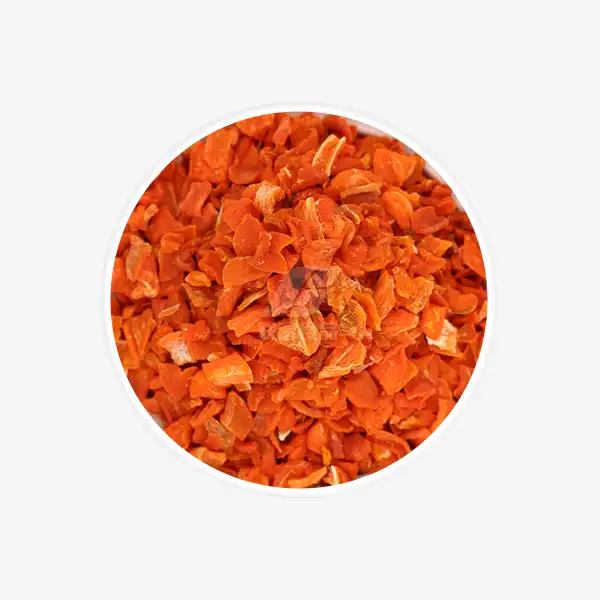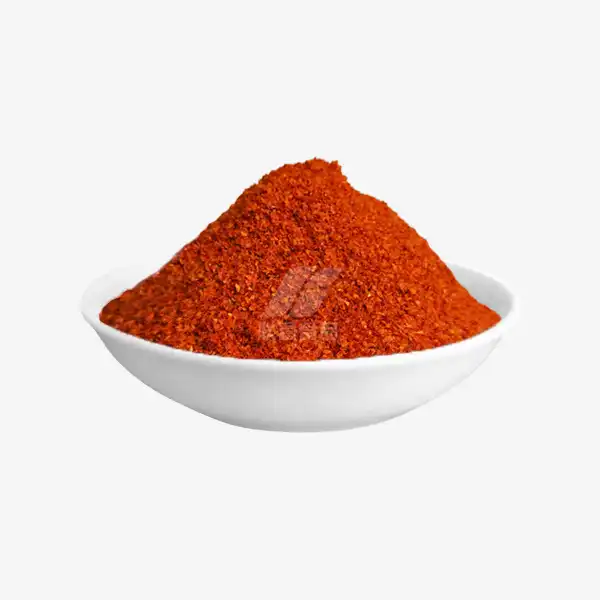How Black Cocoa Powder Enhances Chocolate Flavor?
Black cocoa powder is the result of a unique processing method that transforms regular cocoa into something extraordinary. Through a technique called ultra-Dutching, cocoa undergoes heavy alkalizing that neutralizes its natural acidity. This process not only darkens the color dramatically but also alters the flavor profile in compelling ways:
Intense Bitterness
The hallmark of black cocoa is its profound bitterness. While regular cocoa has some bitter notes, black cocoa amplifies this quality tenfold. This isn't a harsh or unpleasant bitterness, but rather a sophisticated, coffee-like intensity that adds incredible depth to chocolate flavors. The heightened bitterness creates a stark contrast against sweet elements in desserts, resulting in a more complex and satisfying taste experience.
Mellow Acidity
Paradoxically, while black cocoa increases bitterness, it actually reduces the natural acidity found in regular cocoa. The heavy alkalization process neutralizes acidic compounds, resulting in a smoother, less tangy flavor profile. This mellow quality allows the rich cocoa notes to shine through without any sharp edges, creating a luxuriously smooth chocolate taste.
Earthy Undertones
Black cocoa powder introduces subtle earthy flavors that add complexity to chocolate creations. Notes of toasted nuts, roasted coffee, and even hints of tobacco can be detected, creating a multidimensional flavor experience. These nuanced undertones give chocolate desserts made with black cocoa a sophisticated edge that elevates them beyond ordinary sweets.
Amplified Chocolate Impact
Perhaps the most remarkable quality of black cocoa powder is its ability to intensify the overall chocolate flavor. By providing a darker, more robust base, it enhances the perception of chocolate richness. Even when used in small amounts, black cocoa can transform a recipe from mildly chocolatey to deeply decadent. This amplification effect makes it an invaluable tool for creating truly memorable chocolate desserts.
Color Enhancement
While not directly related to flavor, the striking black color of this cocoa variety plays a crucial role in enhancing the chocolate experience. The ultra-dark hue creates a visual intensity that primes our taste buds to expect a more powerful flavor. This psychological effect can actually make chocolate taste richer and more satisfying, even before we take a bite.
Top Uses for Black Cocoa Powder in Baking
The unique properties of black cocoa powder make it a versatile ingredient in the kitchen, capable of elevating a wide range of chocolate creations. Here are some of the most popular and innovative ways to incorporate this intense ingredient into your baking repertoire:
Cookies and Brownies
Black cocoa powder shines in classic chocolate cookies and brownies. Its intense flavor and color create treats with a striking appearance and rich taste. For cookies, try using a blend of black cocoa and regular cocoa to achieve the perfect balance of color and flavor. In brownies, black cocoa can create an almost fudge-like intensity that chocolate lovers will adore.
Cakes and Cupcakes
For truly decadent chocolate cakes and cupcakes, black cocoa powder is unmatched. It produces deeply colored, moist cakes with an intense chocolate flavor. Black cocoa works particularly well in recipes like devil's food cake or black velvet cake, where the dark color is a key feature. When used in cupcakes, it creates a dramatic contrast with colorful frostings or toppings.
Icings and Frostings
Black cocoa powder can transform ordinary chocolate frostings into show-stopping toppings. Its intense color creates a striking visual impact, while the deep flavor complements a variety of cake flavors. For an extra-special touch, try using black cocoa in a chocolate ganache for an ultra-sleek, glossy finish on cakes and pastries.
Homemade Oreos
One of the most popular uses for black cocoa powder is recreating the iconic flavor and appearance of Oreo cookies. The ultra-dark color and intense cocoa taste are essential for achieving that authentic Oreo experience. Homemade versions often surpass the original in flavor and texture, making them a favorite among baking enthusiasts.
Ice Cream and Frozen Desserts
Black cocoa powder can add depth and intrigue to ice creams and other frozen treats. Its intense flavor stands up well to the cold temperatures, ensuring that the chocolate taste remains prominent. Try incorporating it into gelato, sorbet, or even frozen yogurt for a sophisticated twist on classic flavors.
Hot Chocolate
For the ultimate indulgent beverage, black cocoa powder creates an unparalleled hot chocolate experience. Its rich flavor and dark color result in a luxurious drink that's perfect for cold winter nights. Experiment with adding complementary flavors like cinnamon, chili, or even a touch of sea salt to enhance the complex taste profile.
Bread and Pastries
Don't limit black cocoa to just sweet applications – it can also add intrigue to savory baked goods. Try incorporating it into artisanal bread recipes for a striking marbled effect, or use it in laminated pastries for visually stunning croissants or Danish pastries.
Truffles and Bonbons
For chocolate confections, black cocoa powder can create truly luxurious truffles and bonbons. Its intense flavor allows for bold taste experiences even in small portions. Use it in ganache centers or as a dusting for the exterior of truffles for an elegant, sophisticated appearance.
Mousses and Puddings
Black cocoa powder can transform ordinary chocolate mousses and puddings into extraordinary desserts. Its rich flavor and color create a sense of indulgence, while its smooth texture blends seamlessly into creamy preparations. Try layering black cocoa mousse with other flavors for a striking visual and taste contrast.
Is Black Cocoa Powder Healthier Than Regular Cocoa?
As health-conscious consumers increasingly scrutinize their food choices, it's natural to wonder about the nutritional implications of using black cocoa powder. While this intensely flavored ingredient certainly has its culinary merits, how does it stack up against regular cocoa powder in terms of health benefits? Let's explore the nutritional profile of black cocoa and compare it to its less processed counterpart.
Antioxidant Content
One of the primary health benefits associated with cocoa is its high antioxidant content, particularly flavonoids. These compounds have been linked to various health benefits, including improved heart health and reduced inflammation. However, the heavy alkalization process used to create black cocoa powder significantly reduces its antioxidant content. Regular cocoa powder, especially natural (non-Dutched) varieties, retains more of these beneficial compounds.
Mineral Content
Cocoa is naturally rich in several essential minerals, including iron, magnesium, and zinc. The alkalization process used to create black cocoa can affect mineral content, but not always negatively. Some studies suggest that while certain minerals may be reduced, others become more bioavailable (easier for the body to absorb) after alkalization. The overall impact on mineral content is complex and can vary depending on the specific processing methods used.
Acidity and Digestibility
One potential advantage of black cocoa powder is its reduced acidity. The alkalization process neutralizes the natural acids present in cocoa, which can make it easier to digest for some individuals. People who experience acid reflux or other digestive issues when consuming regular cocoa may find black cocoa to be a more stomach-friendly option.
Caffeine and Theobromine
Cocoa naturally contains stimulants like caffeine and theobromine, which can have both positive and negative health effects depending on individual sensitivities. The alkalization process used to create black cocoa can slightly reduce the levels of these compounds, potentially making it a better choice for those looking to limit their caffeine intake.
Calorie and Fat Content
In terms of macronutrients, black cocoa powder is similar to regular cocoa powder. Both are relatively low in calories and fat when used in moderation. However, it's worth noting that the intense flavor of black cocoa may allow you to use less overall in recipes while still achieving a rich chocolate taste, potentially reducing calorie intake.
Absence of Additives
High-quality black cocoa powder typically contains no additives or artificial ingredients. This can be seen as a health advantage compared to some commercial cocoa products that may include added sugars or preservatives. Always check the ingredient list to ensure you're getting pure cocoa powder without unwanted additions.
Potential for Reduced Sugar Usage
While not directly related to the cocoa itself, the intense flavor of black cocoa can indirectly contribute to healthier recipes. Its strong taste often allows bakers to reduce the amount of sugar in their creations while still achieving a satisfying chocolate flavor. This can lead to lower-calorie, less sugary desserts without sacrificing taste.
Moderation is Key
As with many foods, the health impact of black cocoa powder largely depends on how it's used. While it may have slightly fewer antioxidants than regular cocoa, it can still be part of a healthy diet when consumed in moderation. The key is to use it thoughtfully as part of an overall balanced approach to nutrition.
Considering Individual Health Goals
When deciding between black cocoa and regular cocoa powder, consider your specific health objectives. If maximizing antioxidant intake is your primary goal, regular cocoa powder may be the better choice. However, if you're looking for a lower-acid option or a way to reduce sugar in your baking, black cocoa could be beneficial.
Conclusion
Black cocoa powder stands out as a remarkable ingredient that can transform ordinary chocolate creations into extraordinary culinary experiences. Its intense flavor, striking color, and unique properties make it a valuable tool for bakers and chocolate enthusiasts alike. While it may not boast the same antioxidant levels as regular cocoa, its potential for creating lower-sugar desserts and its digestive benefits for some individuals give it a place in health-conscious kitchens.
Ready to explore the dark, delicious world of black cocoa powder? Experiment with this unique ingredient in your next baking project and discover the depth and intensity it can bring to your chocolate creations. For high-quality black cocoa powder and other specialty baking ingredients, feel free to reach out to us at qingzhengliu@jslianfu.com.

_1729843393550.webp)









